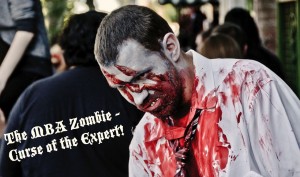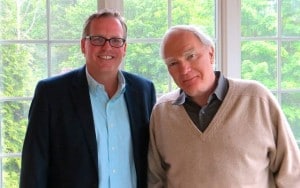The frozen food aisle felt great yesterday, offering a delicious reprieve to a 113 degree Arizona Saturday afternoon. Then I heard the announcement over the PA system:
“We just got another $5 donation for prostate cancer.”
“Oh no,” I thought. I’m going to be guilted into giving to another cause as I check out with my Lloyd’s barbeque ribs, Kraft mac-and-glue, and Coors Light.
“Just got a $5 contribution for prostate care,” another checker chimed in for the entire store to hear. All told, while I shopped for about 15 minutes, Safeway raised around $60 in shopper donations. My initial annoyance of the pending “Ask” began to thaw into more of a sense of community. As I heard the one, three and five dollar amounts shouted out, I felt the growing need to participate.
Socialization is one of the primary drivers in game theory
Safeway’s donation drive was nothing more than a game it was playing with its shoppers, while doing something great for the community. But could it have been more effective?
 I just finished the book, “Game-based Marketing: Inspire customer loyalty through rewards, challenges, and contests” by Gabe Zichermann and Joseline Linder. Having attended Gabe’s gamification workshop at the recent Sustainable Brands Conference, in Monterey, CA, I’ve been fascinated by game dynamics in creating real and lasting behavior change.
I just finished the book, “Game-based Marketing: Inspire customer loyalty through rewards, challenges, and contests” by Gabe Zichermann and Joseline Linder. Having attended Gabe’s gamification workshop at the recent Sustainable Brands Conference, in Monterey, CA, I’ve been fascinated by game dynamics in creating real and lasting behavior change.
As the book reveals, we are constantly playing games. Sometimes we even participate without knowing (See the “Naive Player” description in the book), with everything from frequent flyer miles, to currying favor with a Starbucks barista, to customer loyalty programs like Safeway’s Club Card.
Safeway deployed a small set of social game dynamics in its prostate fundraiser, but I think they could’ve created an immensely more compelling game with a few added twists.
First, Safeway’s primary strategy focused on the “Socializers,” one of the four primary archetypes of gamers, which comprises approximately 80% of all game players, according to Zichermann. People play to be social, and winning is secondary. In the case of the prostate drive, the sense of winning comes in making a donation that is cajoled out of you by announcing the donations being made real time by your fellow shoppers (The social side of their game).
Five ways they could’ve made the game more fun
However, it seems they could’ve amplified their success by also using the four primary motivational constructs of gaming: leaderboards, points, badges and challenges.
- Leaderboards: Since I’m a Club Card member, why didn’t they ask for permission to announce not just my contribution but my name to the store? Sure, some folks will want to give anonymously. But if game theory tells us anything, it’s that people crave recognition for their achievements and good deeds. Plus, it would personalize the exchange and make the overall “Ask” even stronger to the next shopper.
- An electronic leaderboard promoting the names of the contributors could have also been positioned at the exits to acknowledge their gifts and alert sweaty incoming shoppers that they are entering an important game currently in play.
- Points: Safeway built three levels into this particular game – $1, $3 and $5 contributions. So the shopper personally levels up depending on which contribution they choose to make, and presumably gets an increasing level of self gratification depending on which denomination they choose. I felt better about my $5 contribution than if had I given less. Safeway missed a great opportunity to give coupons of varying degrees, depending on the level, to thank the shopper for playing.
- Badges: Along with the coupon, Safeway could have also attached a brightly colored yellow, green or blue thank you sticker to the shopper’s bag signifying which level you belong to. It’s an atta-boy-or-girl that provides a demonstrable thank you and ignites the curiosity of the shopper behind you leading to the conversation about their contribution.
- Challenges: Finally, I’m wondering if Safeway could’ve added an internal challenge by marking random products with the prostate game sticker and providing a $10 contribution in the name of the shoppers that happen to have it in their basket at checkout. This is the kind of designed serendipity that adds an element of surprise and reward to make the game more intriguing. As shoppers look for the stickers, they are culling through other merchandise that will illicit the spontaneous purchase they might not otherwise had considered.
The game inside the game seemed to be blowing up
In addition to the shoppers, it appeared that the checkers were competing with each other for the amount of contributions they secured from shoppers. But it was awkward. The poor guy that rang up my groceries was being badgered by what appeared to be an assistant manager, another checker and a bag boy, to make sure he was playing their internal game. They kept asking him in front of me and those in our line about how many donations he had tallied, and how was his dollar amount? You could tell he was NOT into the game, and I felt bad for him.
I’m curious how management structured this secondary game of checker competition, because it clearly wasn’t resonating with this player. It underscored another important element in Zichermann’s book about how critical is competition compared to other social dynamics? It turns out, competition is NOT the most important motivator in creating a compelling game.
I do believe that gamification is gaining a growing influence on marketing and behavior change, and that we’re entering a whole new realm of ways to reach and engage customers. So pay attention to the games that you’re participating in over the next few days. I bet you’ll find that you’re a pawn in a game or two that you didn’t even realize is underway.
Let me know how you fare.












at 1:17 pm
Great ideas, and I’ll try to take a look at the book! Out of curiosity, do you have any suggestions as to how the game could have been made “more fun” for the check-out employee? Tons of grocery and other retail stores run these kinds of internal employee competitions for sign-ups to loyalty cards, credit cards etc. There are often rewards (like gift cards and such) but for those that are not really into it, these games can be really demotivating and make the work environment annoying. Unlike customers though, they don’t have the option to not participate really, especially with managers breathing down their backs (as in your example).
at 9:39 am
Good question. Since they appear to be “mandated” to participate, it can take the fun out of the play. Perhaps they should simply let them opt-in to play. I’m sure the peer pressure and sense of community among the checkers would insure good participation. And if you have folks that just want to work and find it annoying to be forced into the “ask,” then so be it. Respect their feelings and move on with the rest of the team. It will also tell management a little bit about how strong that particular link is in the chain.
at 1:45 pm
[…] I was introduced to gamifying sustainability at last year’s conf. http://bit.ly/mDvmhb. Is it a big driver for you? Its funny—because we modeled ourselves after LEED. We were […]